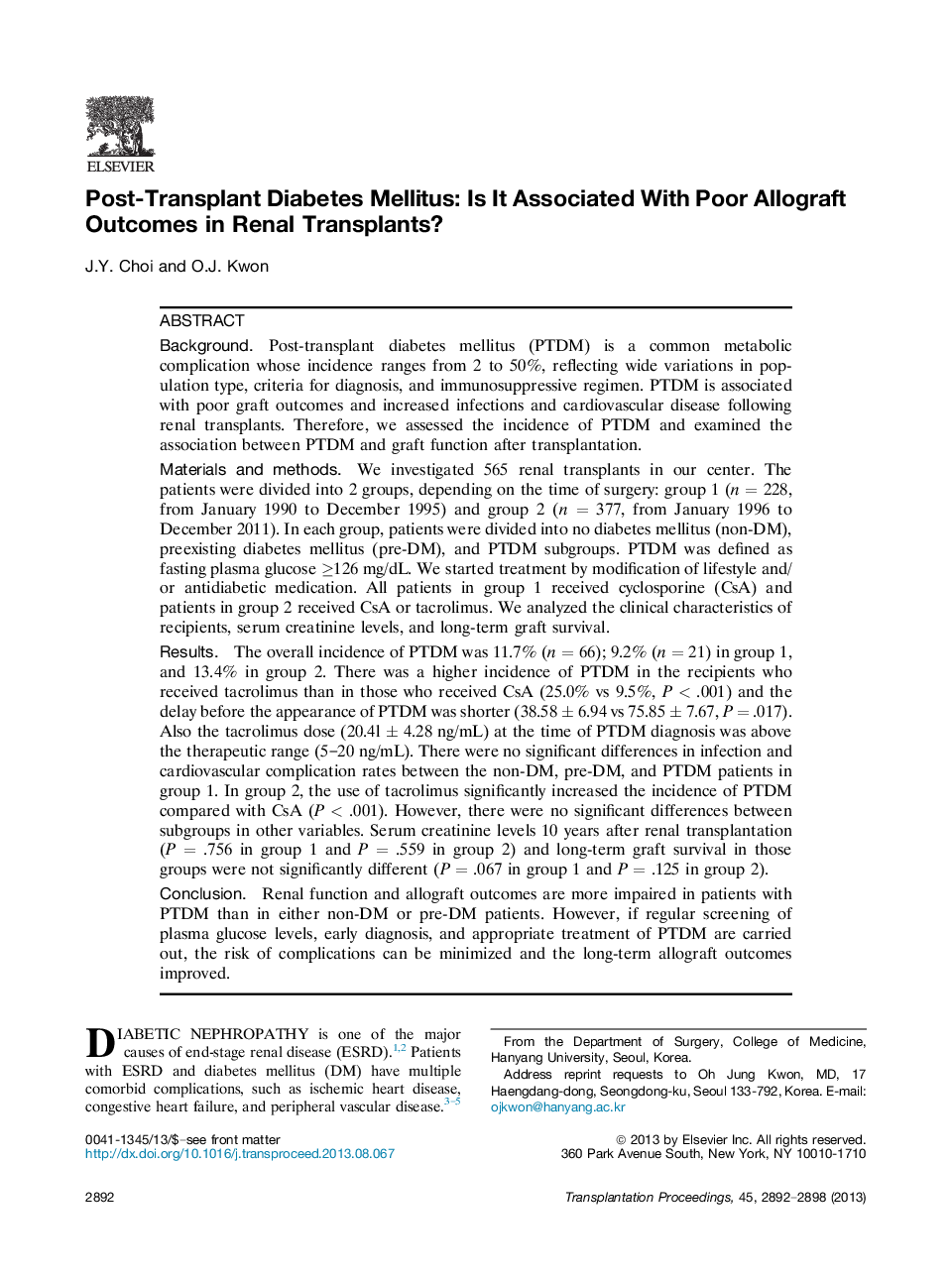| کد مقاله | کد نشریه | سال انتشار | مقاله انگلیسی | نسخه تمام متن |
|---|---|---|---|---|
| 6249891 | 1284572 | 2013 | 7 صفحه PDF | دانلود رایگان |
BackgroundPost-transplant diabetes mellitus (PTDM) is a common metabolic complication whose incidence ranges from 2 to 50%, reflecting wide variations in population type, criteria for diagnosis, and immunosuppressive regimen. PTDM is associated with poor graft outcomes and increased infections and cardiovascular disease following renal transplants. Therefore, we assessed the incidence of PTDM and examined the association between PTDM and graft function after transplantation.Materials and methodsWe investigated 565 renal transplants in our center. The patients were divided into 2 groups, depending on the time of surgery: group 1 (n = 228, from January 1990 to December 1995) and group 2 (n = 377, from January 1996 to December 2011). In each group, patients were divided into no diabetes mellitus (non-DM), preexisting diabetes mellitus (pre-DM), and PTDM subgroups. PTDM was defined as fasting plasma glucose â¥126 mg/dL. We started treatment by modification of lifestyle and/or antidiabetic medication. All patients in group 1 received cyclosporine (CsA) and patients in group 2 received CsA or tacrolimus. We analyzed the clinical characteristics of recipients, serum creatinine levels, and long-term graft survival.ResultsThe overall incidence of PTDM was 11.7% (n = 66); 9.2% (n = 21) in group 1, and 13.4% in group 2. There was a higher incidence of PTDM in the recipients who received tacrolimus than in those who received CsA (25.0% vs 9.5%, P < .001) and the delay before the appearance of PTDM was shorter (38.58 ± 6.94 vs 75.85 ± 7.67, P = .017). Also the tacrolimus dose (20.4l ± 4.28 ng/mL) at the time of PTDM diagnosis was above the therapeutic range (5-20 ng/mL). There were no significant differences in infection and cardiovascular complication rates between the non-DM, pre-DM, and PTDM patients in group 1. In group 2, the use of tacrolimus significantly increased the incidence of PTDM compared with CsA (P < .001). However, there were no significant differences between subgroups in other variables. Serum creatinine levels 10 years after renal transplantation (P = .756 in group 1 and P = .559 in group 2) and long-term graft survival in those groups were not significantly different (P = .067 in group 1 and P = .125 in group 2).ConclusionRenal function and allograft outcomes are more impaired in patients with PTDM than in either non-DM or pre-DM patients. However, if regular screening of plasma glucose levels, early diagnosis, and appropriate treatment of PTDM are carried out, the risk of complications can be minimized and the long-term allograft outcomes improved.
Journal: Transplantation Proceedings - Volume 45, Issue 8, October 2013, Pages 2892-2898
